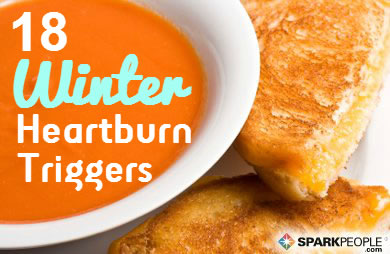Pass the penne.
Serve up some spaghetti.
Fetch some fettuccini.
Pasta is back in style.
Low-carbohydrate fads were trumped last year by rising food prices, as more consumers turned to pasta to stretch their food buck. Sales of the pantry staple rose 5 percent, according to American Italian Pasta Co., the biggest U.S. manufacturer of dry pasta. Part of that increase is linked to the rising costs of commodities, including wheat, which manufacturers passed on to consumers.
Consumption of pasta rose 0.4 percent by volume nationwide. An Associated Press story that ran in the International Herald Tribune said those numbers exclude pasta sales at Wal-Mart, where consumption rates rose higher.
Whole-wheat, multi-grain and other "better for you" pastas are continuing to sell well, according to industry experts.
Pasta is cheap, filling and easy to make, but be careful to not overload on it, even when you're watching your bottom line.
- Swap whole-wheat or multigrain pasta for the white stuff. It costs just a couple of cents more per serving, tastes just about the same and has added fiber and nutrients. If your family is picky, start with half whole-wheat pasta and half regular pasta. Gradually replace the white pasta with whole wheat, and soon the whole-wheat pasta will be the "regular" pasta in your house. (Tip: Stock up on whole-wheat pasta when it goes on sale and watch for coupons if you're concerned about the added cost.)
- Know your portions. A serving size of pasta is a half-cup or about the size of a billiard ball. (For those who can weigh their servings, you can alternately consider a serving of pasta to be 2 ounces, though it's not equal to a half-cup.) Serve pasta on a smaller plate or in a salad bowl so your proper portion isn't dwarfed by your serving dish.
- Sneak in some vegetables. Grate carrots and zucchini, chop up broccoli and eggplant or dice onions and peppers into your tomato sauce. Purée any green vegetable (I like asparagus, spinach, broccoli or peas) with a pesto sauce. Toss a light alfredo with peas, broccoli, or red and yellow peppers.
- Lighten up your meat. Choose lean ground beef (or, better yet, all-white meat ground turkey) and drain it well before mixing with your sauce. Instead of buying greasy, salty Italian sausage, season your leaner cuts of meat with oregano, fennel seeds, basil, and thyme or a salt-free Italian seasoning blend.
- Go easy on the cheese. Use hard cheeses like parmesan and romano, which have a concentrated flavor, instead of softer, milder cheeses like provolone or mozzarella. Instead of mixing cheese into the sauce, where the taste will quickly meld with the rest of the ingredients, sprinkle cheese on top for a salty, rich jolt to the taste buds in every bite.
- Learn how to properly sauce pasta. Letting noodles get cold and gummy before adding sauce. Placing pasta on a plate, then dumping on sauce. Using oil to keep pasta from sticking together. These are all no-no's when it comes to saucing pasta. Watch this quick, entertaining video by Chow to learn how to properly sauce your pasta like the pros do.
Looking for some new pasta recipes? My Perfectly Healthy Pasta was recently featured in a weekly magazine, and SparkRecipes has plenty of other healthful pasta recipes, many for fewer than 200 calories a serving.
Are you keen on pasta? Are you stocking up on pasta and other cheap staples? What is your favorite way to serve pasta?
|
|

.png)













